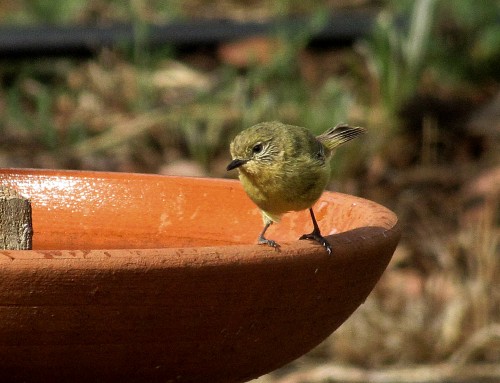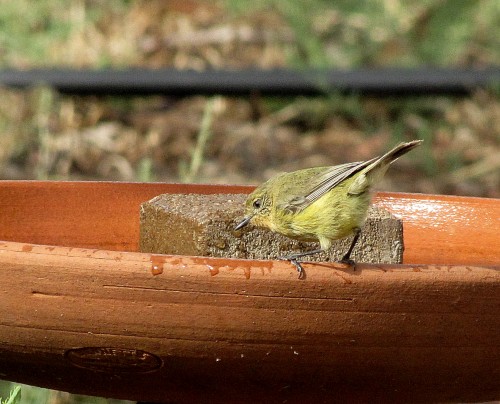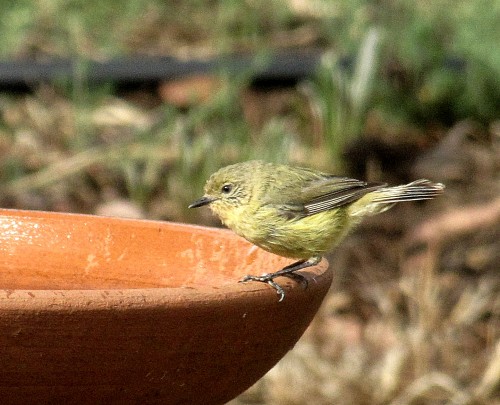Bird photography
Photos on this site
I must admit that this site would be much poorer and quite uninteresting for readers without the photos I include with most of my posts. The vast majority of the articles I post here are illustrated by at least one photo; sometimes as many as 4 or 5. In fact, the photos I take are usually the reason for posting an article, that is, the words result from the photos taken.
Early photographic attempts
In my early years of birding I bought a cheap SLR camera which took reasonable scenery photos, all in 35mm slide format. This was in the pre-digital era, the 1980s. I also invested in a telephoto lens in order to take bird and wildlife photos, along with a cumbersome tripod. The results were mixed – many taken with the telephoto lens were poor and mostly unusable here. (As an aside, my son has recently completed scanning all of these early slides into digital format. I plan to use the best of them on this site later in the year.)
First digital camera
In the late 1990s I acquired my first digital camera, a very basic Kodak point and shoot. It gave me a renewed enthusiasm for photography. I can’t remember much about the details of this camera, but a little research found the user’s manual to the Kodak Easyshare CX4200 digital camera which was a 2megapixel point and shoot. It only had a 2x digital zoom, virtually useless for bird photography.
Canon SX2 IS
In 2005 I was preparing to go trekking in Nepal. I upgraded to a Canon Powershot SX2 IS. This was a huge jump forward because now I had 12x optical zoom and 5megapixals to play with. It was lightweight, easy to use and took some fabulous photos of the Himalayas. It also opened up many possibilities for bird and wildlife photography. It was about then that this bird site commenced.
Canon SX20 IS
In 2011 my wife and I were preparing for another overseas holiday, this time in Ethiopia, Morocco and Spain. While the main purpose was to visit our daughter who was teaching in Ethiopia, it was also highly focussed on doing the tourist thing. Bird photography was not the main aim; any birds seen and photographed along the way was an incidental bonus.
Well before the trip I upgraded to a Canon SX20 IS and my wife took over the SX2. Between us we managed about 8000 photos in six weeks, including some great bird shots. The 20x optical (plus 4x digital making it effectively 80x) zoom on my new camera gave me so much more flexibility and is proving its worth almost every day while taking photos in our garden, and around our district. I am planning several more major caravanning trips this year, and these will always be where I can get more bird photos.
And as an added bonus, the camera is perfect for taking great shots of my two grandchildren, age 4 and 17 months.
An excellent article
Yesterday I came across an excellent article on using point and shoot cameras for bird photography. Interestingly, the author also uses the Canon SX50 which has a great 50x zoom. Mmm.. I wonder if my wallet can stand another assault? I almost feel the need to upgrade. You can read the article Birding with a point and shoot camera here.
Further reading:
- How to be a birder part 14 – part of a series I wrote some years ago
- How to be a birder – index of the whole series
- I have a new camera – first impressions of the Canon SX20
Little Thornbills take a bath
We have many different birds resident or visiting in our garden and adjacent mallee scrub. We have quite a few thornbills, species which are always a challenge to identify. Many of them are little brown birds which move quickly and are hard to hold in focus for long with binoculars. Most are even harder to focus on with a camera.
I have over the years managed reasonable photos of the common Yellow-rumped Thornbill. I have fewer good photos of the occasional visiting Chestnut-rumped Thornbills. And until earlier this week I had no photos of the elusive Little Thornbill which is also called the Yellow Thornbill. This species is commonly heard and seen in our garden and nearby, but never have I managed to capture one with my camera.
Earlier this week a loose flock of about 6 of this lovely species came to one of our bird baths. they flitted in and out of the water, zipping to branches high above to preen before diving down to the water ago. I had to be very patient with my camera, making sure it was focussed on the edge of the bird bath in anticipation before snapping them. I was pleased to manage three reasonable shots.
Further reading:
Superb Fairy-wrens take a bath
We used to have a few wrens in our garden from time to time, mainly in the late 1980s and early 1990s. On all occasions they were Variegated Fairy-wrens, which is not the dominant wren species of the region.
About a year ago on our return from six weeks’ holiday overseas, we were greeted by two Superb Fairy-wrens, a male and a female, who had taken up residence in our absence. (Read about that here.) We have seen them almost every day since – except for the last month. Suddenly they have reappeared, this time with a third, uncoloured, bird. It is entirely possible that they have nested nearby without telling us, or giving away the location of their nest.
All three birds took delight in having a good splash in one of our bird baths yesterday while I was finishing my breakfast and trying to complete the crossword in the paper. Sadly, I wasn’t quick enough with the camera, so I’ll use a photo taken elsewhere on another occasion.
Ducklings off for a swim
On a recent visit to Clare late last year I took off about a half hour from helping my daughter in her garden and took a five minute walk down the road to Lake Inchiquin. Yesterday I wrote about some of the birds I saw.
One of the highlights was this little family of Pacific Black Ducks. From the size of the ducklings I’d say that they are about half grown. It was a lovely sight and they let me come to within a few metres of them.
I guess they knew that I wouldn’t dive in and harm them in any way.
A little birding in Clare
Last December we visited our daughter who teaches in Clare in the mid-north of South Australia. One afternoon I wandered down the road to Lake Inchiquin which is next the Melrose Park on the northern edge of town. Over recent years I have often visited this top little spot to do a little birding.
Over recent years this lake has often been almost dry due to the extended drought conditions we’ve experienced over that period. This last year’s good rains has seen the lake return to capacity again. The birds have also returned, so I try to find a half hour or so to check it out every time we visit our daughter.
On this occasion I saw a few Pacific Black Ducks, Chestnut Teal, Grey Teal, plenty of Eurasian Coot, several Masked Lapwings and a solitary Darter. On the opposite shore a single Great Egret patrolled the lake edges, especially near the reeds. Another species was a Yellow-billed Spoonbill but I didn’t manage a photo of the one bird seen flying overhead.
Away from the water the birdlife was just as interesting, with Laughing Kookaburras, Little Corellas, Galahs and dozens of Rainbow Lorikeets. In nearby trees I saw Noisy Miners, Red Wattlebirds and White-plumed Honeyeaters. Standing quite still for about 5 minutes I watched a Mallee Ringneck feeding on the seeds of some weeds growing on the bank of the lake.








